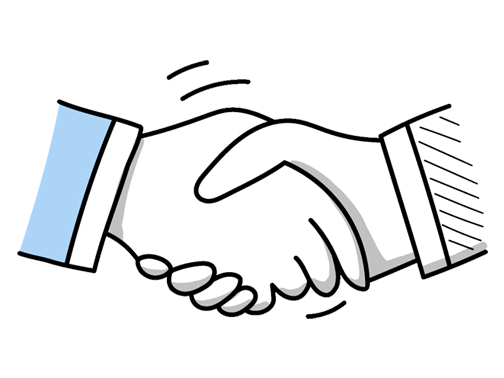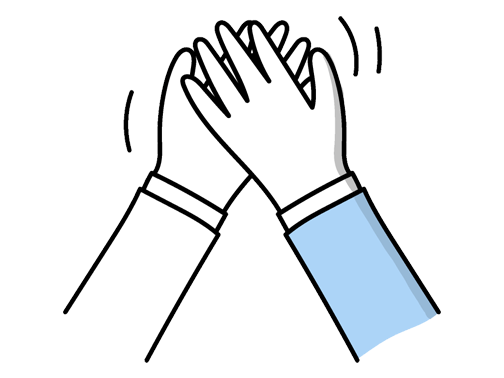Exercise Therapist Interview Questions (2025 Guide)
Find out common Exercise Therapist questions, how to answer, and tips for your next job interview
Practice Interviews Online - Identify your strengths and weakness in a realistic Exercise Therapist mock interview, under 10 minutes
Practice Now »Exercise Therapist Interview Questions
Questions like this assess your ability to customize treatments to meet individual patient needs and show your responsiveness to their progress and concerns. You need to describe a specific situation where you listened to feedback, adjusted the exercise plan accordingly, and helped improve the patient's outcomes.
Example: Certainly. I once had a patient struggling with a shoulder rehab routine who found certain movements uncomfortable. After discussing their feedback, I adjusted the exercises to focus on lighter resistance and increased rest breaks. This not only improved their comfort but also encouraged better engagement and progress. Listening and tailoring programs based on what patients share really makes a difference in outcomes.
This question aims to assess your teamwork skills and how you integrate with other professionals to enhance patient care. You need to describe a specific example where you worked closely with others, highlighting your communication and collaboration that led to better outcomes for the patient.
Example: During my time working with a multidisciplinary team, I coordinated closely with physiotherapists and nurses to tailor exercise plans for stroke patients. By sharing observations and adjusting routines together, we helped improve mobility and confidence more quickly than expected. This collaboration not only enhanced recovery but also ensured each patient felt supported from different angles of care.
Questions like this assess your ambition, dedication to growth, and how your goals align with patient care. You need to clearly outline your plans to specialize or advance your skills while emphasizing your commitment to improving client outcomes.
Example: In the long term, I aim to deepen my expertise by pursuing further certifications and staying updated with the latest rehabilitation techniques. I want to help patients achieve meaningful improvements, tailoring exercise plans that genuinely enhance their quality of life. Ultimately, I see myself taking on leadership roles where I can mentor others and contribute to developing best practices within the therapy team.
Hiring managers ask this question to see how you tailor exercise programs safely and effectively for vulnerable patients with chronic conditions. You need to explain how you assess individual needs and limitations, adapt exercises thoughtfully, and apply evidence-based practices to ensure safety and maximize benefits.
Example: When working with patients who have chronic conditions, I start by carefully understanding their health background and any limitations they face. I tailor exercises to suit their abilities, adjusting intensity or movement to reduce any risk. I also stay updated with research to choose approaches that truly work. For example, I might modify a walking routine for someone with arthritis to ensure they build strength without discomfort.
This interview question assesses your ability to engage patients and ensure they stick to their exercise plans, which is crucial for their recovery and success. You need to explain how you communicate to understand their goals, use practical methods like setting milestones and positive feedback, and regularly monitor and adjust their programs to keep them motivated.
Example: I focus on building a strong connection by listening to what truly drives each patient. Setting achievable goals together helps keep them engaged, and I regularly check in to celebrate progress or tweak the plan if needed. For example, I had a patient struggling with motivation, so we broke exercises into smaller, manageable steps, which made it feel less daunting and much easier to stick with.
What they want to understand is how your past experience has equipped you with relevant skills and knowledge for this role. You need to clearly connect specific duties or achievements from previous jobs to the key responsibilities of this position.
Example: In my previous roles, I’ve worked closely with diverse clients, tailoring exercise plans to their specific needs and progress. This hands-on experience has sharpened my ability to motivate and adapt programs effectively. For example, helping patients improve mobility after injury taught me the importance of patience and clear communication—skills I’m eager to bring to this role as an exercise therapist.
Employers ask this to understand your foundational knowledge and qualifications directly related to exercise therapy. You need to clearly state your degree, relevant certifications, and any specialized training that prepares you for the role.
Example: I studied Exercise Science at university, which gave me a solid foundation in anatomy and physiology. I’m also certified in CPR and have completed specialised courses in injury prevention and rehabilitation techniques. For example, working with clients recovering from sports injuries has helped me apply this knowledge practically, enhancing their recovery and overall fitness safely. This blend of education and hands-on experience has prepared me well for the role of an exercise therapist.
What they want to know is if you can recognize and adapt to different patient needs to ensure effective communication. You should explain how you identified the patient's communication challenge, what changes you made to your approach, and the positive results that followed.
Example: During a session with an older patient who struggled to understand medical terms, I noticed they became confused and disengaged. I switched to using simpler language and more visual cues, like demonstrating exercises rather than just explaining them. This adjustment helped the patient feel more confident and motivated, leading to better participation and steady progress throughout their therapy.
This question aims to show your dedication to continuous learning and applying new evidence to improve client outcomes. You need to say that you regularly attend professional events, follow trusted journals, and incorporate the latest research into your therapy methods.
Example: I make a point of regularly reading journals like the British Journal of Sports Medicine and attending webinars or local workshops whenever possible. I also follow respected professionals and organisations on social media to catch emerging trends. By integrating what I learn into my exercise programmes, I ensure my clients benefit from the most effective, evidence-based approaches. Staying curious helps me provide tailored and up-to-date care.
Employers ask this to see if you are committed to staying current in your field and actively improving your skills. In your answer, mention specific organizations you belong to and explain how attending their events or networking helps you learn and grow professionally.
Example: I’m a member of the Chartered Society of Physiotherapy, which keeps me updated on the latest exercise therapy research and best practices. Engaging with their workshops and online forums has helped me refine my skills and stay connected with other professionals. This ongoing exchange not only supports my personal growth but also allows me to bring fresh, evidence-based approaches to the people I work with.
Interviewers want to see that you prioritize patient safety while delivering effective, personalized care. You should explain that you thoroughly assess the patient’s medical history and collaborate with healthcare providers, then design a balanced exercise plan that fits their conditions and adjust it based on ongoing feedback and progress.
Example: When working with someone managing several health issues, I start by thoroughly understanding their medical background and any limitations they may have. From there, I design a plan that’s both safe and effective, often incorporating gentle progressions. I make it a point to stay in close contact, adjusting the routine based on how they feel and any changes in their condition. For example, if joint pain flares up, I might swap in low-impact exercises to keep them moving comfortably.
This interview question aims to assess your ability to integrate scientific research into practical therapy plans and adapt them to individual client needs. You should explain how you use current studies and guidelines to design customized programs and how you monitor and adjust these plans based on client progress and evidence-based results.
Example: When designing exercise therapy programs, I stay up to date with the latest research and clinical guidelines to ensure my approach is grounded in solid evidence. I then tailor this knowledge to each client’s unique needs and progress, regularly reviewing outcomes to adjust the plan if necessary. For example, if a particular technique isn’t improving mobility as expected, I’ll explore alternative methods backed by research to better support the individual’s recovery.
Interviewers ask this to see how you prioritize patient safety and respond to pain signals during therapy. You need to explain that you first assess the pain by asking details and intensity, then immediately modify or stop the exercise to avoid injury, and finally communicate clearly while documenting the incident.
Example: If a patient mentions pain during a session, I first pause the activity to understand what they’re feeling and how intense it is. I’ll ask questions to pinpoint the issue and decide whether to adjust the exercise or stop altogether. Open communication is key—I make sure they feel heard and safe. Afterwards, I note down what happened to track progress and avoid repeat issues. For example, if someone feels sharp knee pain, I’d switch to a gentler move right away.
Employers ask this to see if you are self-aware and committed to professional growth. You need to explain how you regularly review client progress to assess your effectiveness, identify patterns or challenges in treatment, and take steps like training to improve your skills.
Example: I regularly take time to review my sessions, considering both client feedback and outcomes to see what’s working well and where I might adjust. I also seek input from colleagues and stay updated with the latest research or training opportunities to sharpen my skills. For example, if I notice a client struggling with an exercise, I reflect on my approach and explore new techniques to better support them.
This question assesses your dedication to ongoing learning and improvement in your field. You need to briefly describe specific workshops or courses you've completed, how you've applied new skills in your work, and reflect on your growth and future goals.
Example: Over the past year, I’ve completed workshops on advanced exercise prescription and attended seminars on rehabilitation techniques, which I’ve integrated into my client programs to improve outcomes. I also regularly review current research to stay updated and have sought feedback from colleagues to refine my approach. This ongoing learning helps me adapt and grow, ensuring I provide the best support tailored to each individual’s needs.
Employers ask this question to see how you problem-solve and adapt your therapy to meet patient needs. You need to say that you assess the situation carefully, communicate openly with the patient, and adjust the treatment plan as needed to support their progress.
Example: When progress stalls, I take a step back to understand what might be holding the patient back—whether it’s physical limits, motivation, or external factors. I make sure to have an open, honest conversation with them, listening carefully to their experience. Then I adjust the plan, perhaps trying new exercises or pacing things differently, always tailoring the approach to what works best for that individual.
Employers ask this to assess your problem-solving skills and ability to handle difficult situations effectively. You need to describe the challenge clearly and explain the specific steps you took to create a successful treatment plan.
Example: In one case, I worked with a patient recovering from a stroke who struggled with motivation during rehab. I tailored exercises to their interests, incorporating music and short, achievable goals to keep them engaged. Over time, their progress improved significantly, showing me how adapting therapy to individual needs can make a real difference.
This question assesses your ability to prioritize patient care effectively under pressure, ensuring the most urgent needs are addressed first while managing multiple treatment plans. You should explain how you evaluate patient urgency, organize schedules using tools, and communicate changes clearly to adapt priorities as patients progress.
Example: When managing several patients, I focus first on those needing urgent care or with conditions that could impact mobility significantly. I keep a well-organized schedule, balancing treatment plans carefully to ensure everyone gets appropriate attention. Communication is key—if a patient’s progress changes, I quickly adjust their plan and keep the team informed. For example, if someone improves faster than expected, I can shift time to support another who needs more help.
Questions like this help the interviewer understand what motivates you and how you find meaning in your work. You need to share a specific experience where your intervention made a positive impact on a client's health or wellbeing, showing your passion and effectiveness as an exercise therapist.
Example: One of the most rewarding moments was helping a client recover from a serious injury. Seeing their confidence grow as they rebuilt strength and regained mobility reminded me why this work matters. Being part of someone’s journey to better health, not just physically but mentally, makes all the challenges worthwhile. Those small victories often mean the most.
What they want to understand is how committed you are to continuous learning and critical evaluation in your field. You should say that you regularly attend workshops and conferences, engage with professional networks, and carefully assess new techniques for credibility and relevance before applying them.
Example: I make it a point to regularly read journals like the British Journal of Sports Medicine and attend webinars or workshops whenever I can. I’m part of a local network of exercise professionals, which helps me discuss fresh ideas and practical applications. When I come across new techniques, I critically assess the evidence behind them before trying them out with clients, ensuring what I use is both current and effective.
Questions like this assess your practical experience and ability to customize therapy for diverse groups. You should clearly describe your work with populations like the elderly or athletes, explain how you tailored your methods to their needs, and highlight the positive results you helped them achieve.
Example: I’ve worked with a range of clients, from elderly individuals recovering from surgery to athletes rehabbing injuries. With older adults, I focus on improving mobility and balance through gentle, tailored exercises. For athletes, it’s about targeting strength and flexibility to enhance performance and prevent setbacks. Seeing their progress—whether regaining independence or returning to sport—makes the work truly rewarding.
Interviewers ask this question to understand how you evaluate a patient's condition comprehensively and tailor exercise plans safely. You need to explain that you review medical history and conduct interviews, perform physical tests like strength and flexibility assessments, and use this information to create a personalized plan that respects the patient's limitations.
Example: When I meet a new patient, I start by discussing their medical background and how they’re feeling physically. Then, I observe and test key areas like their strength, flexibility, and stamina—simple tasks like sit-to-stand or arm raises offer great insight. Using this information, I tailor a program that respects their limits while encouraging progress, ensuring they feel supported every step of the way.
Hiring managers ask this question to see how you connect with patients and overcome barriers to therapy. You need to explain that you build trust through empathy and active listening, adapt your communication to their comfort level, and involve them in setting achievable goals together.
Example: When working with patients who feel anxious or hesitant, I focus on really understanding their concerns by listening carefully and showing genuine empathy. I make sure to communicate in a way that feels comfortable for them, whether that’s more relaxed or straightforward. Often, I find involving them in setting small, achievable goals helps them feel more in control and motivated, which naturally builds trust and a positive connection.
This interview question assesses your ability to communicate effectively and motivate patients to follow their exercise plans, which is crucial for successful therapy outcomes. You need to say that you use clear explanations, relate exercises to their personal goals, and regularly check their understanding to keep them engaged and informed.
Example: I make sure to explain how each exercise supports their recovery in simple, relatable terms. I often share real-life examples, like how improving strength or mobility can help with daily tasks they care about. I also encourage questions and check in regularly to keep them motivated and confident in their progress. This way, patients feel involved and understand why sticking to the plan matters.
What they want to know is how well you understand different exercise tools and how you match them to a patient's needs safely. You should say which equipment you're comfortable with, like treadmills or resistance bands, and explain how you assess each patient's condition and goals to choose the safest and most effective option.
Example: I’ve worked with a wide variety of equipment, from resistance bands and free weights to treadmills and balance tools. I usually start by understanding the patient’s goals and limitations, then pick what suits their needs and keeps them safe. For example, with a patient recovering from a knee injury, I’d focus on low-impact machines and avoid anything that could strain the joint, always prioritising proper technique and gradual progression.
Ace your next Exercise Therapist interview with even more questions and answers
Common Interview Questions To Expect
The interviewer is looking for your long-term career goals and aspirations. You can answer by discussing your career progression, skills development, or potential leadership roles within the company.
Example: In five years, I see myself continuing to grow and develop as an Exercise Therapist, honing my skills and knowledge in the field. I hope to take on more leadership roles within the company and contribute to the success of our team. Ultimately, I aim to make a positive impact on the health and well-being of our clients through my work.
The interviewer is looking for insight into your long-term aspirations, motivation, and commitment to your career. Be honest, specific, and show ambition.
Example: My career goal is to continue growing as an Exercise Therapist by pursuing advanced certifications in specialized areas such as sports rehabilitation and injury prevention. I am motivated to help clients achieve their fitness goals and improve their overall well-being through personalized exercise programs. Ultimately, I aspire to open my own wellness center where I can offer a holistic approach to health and fitness.
The interviewer is looking for insight into your decision-making process, your passion for the new career, and how your previous experience has prepared you for this change. Be honest and highlight relevant skills and experiences.
Example: I decided to change career paths because I have always been passionate about helping others improve their physical health and well-being. My previous experience in fitness training and rehabilitation therapy has equipped me with the necessary skills and knowledge to excel as an Exercise Therapist. I am excited to continue making a positive impact on people's lives in this new role.
The interviewer is looking for examples of how you prioritize tasks, manage your time effectively, and handle stress in a fast-paced environment. Be honest and provide specific examples from your past experiences.
Example: Yes, I am able to handle multiple responsibilities at once. In my previous role as an Exercise Therapist, I had to juggle client appointments, create personalized exercise plans, and manage administrative tasks all at the same time. I prioritize tasks based on urgency and importance, and I always make sure to stay organized to avoid feeling overwhelmed.
The interviewer is looking for questions that show interest in the company, the role, and how the candidate can contribute. Asking about company culture, team dynamics, and future projects are good options.
Example: Yes, I was wondering about the team dynamics here and how collaboration plays a role in achieving goals. Can you tell me more about the company culture and how it supports professional growth? Also, I'm curious about any upcoming projects that I could potentially contribute to.
Company Research Tips
The company's website is a goldmine of information. Look for details about the company's mission, values, culture, and goals. Pay special attention to any information related to the health and fitness sector, as well as any specific programs or initiatives related to exercise therapy. This will give you a good understanding of what the company does and how your role as an Exercise Therapist fits into their larger goals.
Tip: Don't just stick to the 'About Us' page. Explore the entire website, including blog posts, news releases, and service descriptions. Look for any recurring themes or messages.
Social media platforms can provide a wealth of information about a company. Look at their posts, comments, and interactions with followers. This can give you a sense of the company's voice, values, and how they interact with their community. For an Exercise Therapist role, look for posts related to health, fitness, and wellness, and see how the company promotes these topics.
Tip: Look beyond the company's posts. The comments and responses can give you a sense of the company's customer service approach and how they handle feedback.
Understanding a company's competitors can give you insights into the industry and the company's position within it. Look at the competitors' services, their strengths and weaknesses, and how the company you're interviewing with differentiates itself. For an Exercise Therapist role, understanding the competitive landscape can help you articulate how you can contribute to the company's success.
Tip: Use tools like Google and LinkedIn to find competitors. Look for news articles or industry reports for a deeper understanding of the competitive landscape.
Websites like Glassdoor offer reviews from current and former employees. These can give you insights into the company culture, management style, and potential challenges within the company. For an Exercise Therapist role, look for reviews from people in similar roles or departments.
Tip: Take these reviews with a grain of salt. They are often skewed towards people who had either very positive or very negative experiences.
What to wear to an Exercise Therapist interview
- Smart casual trousers or skirt
- Clean, well-fitted shirt or blouse
- Comfortable, polished shoes
- Light makeup and minimal jewelry
- Neat, professional hairstyle
- Avoid overly bright colors
- Carry a neat, professional bag
- Wear a blazer if it's a formal setting
- Avoid sportswear, despite the job nature
- Ensure clothes are ironed and clean





